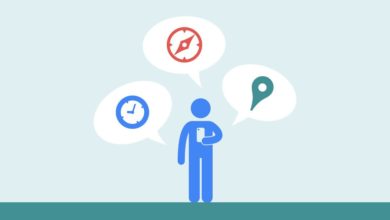Want to Save Your Website from Copycat Infringement?

Introduction
If someone tells you that your website has been copied, it means that another person or entity has replicated or reproduced your website’s content, design, or other elements without your permission or proper attribution. This can include copying text, images, code, layout, and overall visual appearance. Website copying is considered an infringement of intellectual property rights, specifically copyright infringement. It is an unauthorized use of someone else’s original work, which is protected by copyright law.
Ways to Check If Your Site is Stolen Or Copied
Remember, regularly monitoring and taking action against copyright infringement is crucial for protecting your website’s content and intellectual property rights.
Conduct manual searches
Perform searches on popular search engines using unique phrases or sentences from your website’s content. Enclose the phrases in quotation marks to search for an exact match. This can help identify websites that have directly copied your content.
Use plagiarism detection tools
Online plagiarism detection tools can scan the internet and identify instances where your website’s content has been copied without permission. These tools compare your content against other websites and provide reports on any matches or similarities.
Monitor backlinks
Use backlink analysis tools to monitor the websites that link to your site. If you notice unfamiliar websites linking to your content, visit those websites to check if they have copied your content or design.
Set up Google Alerts
Create Google Alerts for unique phrases or keywords from your website. Google will notify you whenever it finds new instances of those phrases online. This can help you identify websites that have copied your content in the future.
Check web analytics data
Analyze your website’s traffic and referral sources using tools like Google Analytics. Sudden spikes in traffic or referrals from unfamiliar websites may indicate that your content has been copied and is driving traffic to the infringing site.
Reverse image search
If you suspect that your images have been copied, use reverse image search engines to search for identical or similar images on the internet. This can help identify unauthorized use of your visual content.
What to do When Someone Steals your Site?

If you discover that your website has been copied, it’s important to take appropriate action to protect your rights. This may involve contacting the individual or organization responsible for the infringement, sending a cease-and-desist letter, filing a DMCA takedown notice with the hosting provider or relevant platform, or consulting with an intellectual property attorney to explore legal options.
- Discovering that someone has stolen your website can be frustrating and concerning. If you find that someone has stolen your site, here are the steps you can take to address the situation:
- Document the evidence – Take screenshots or gather evidence to demonstrate that your website has been stolen. Capture the infringing website’s URL, copied content, and any other relevant information that can support your claim.
- Contact the infringer – Reach out to the individual or organization responsible for the stolen website. Communicate your knowledge of the infringement, provide evidence, and request that they immediately take down the copied content or replicate your site.
- Send a cease-and-desist letter – Draft a formal cease-and-desist letter, clearly stating your ownership of the website, the infringement that has occurred, and a demand to remove the stolen content or replicate your site. Send the letter to the infringer via certified mail or email to create a record of communication.
- Report to the hosting provider – If the stolen website is hosted by a service provider, contact the hosting company and report the copyright infringement. Provide them with the necessary evidence and details of the infringement. Hosting providers often have procedures in place to address copyright violations.
- Report to search engines – If the stolen website appears in search engine results, report the copyright infringement to the search engine Google, for instance, provides a specific process for reporting copyright violations through its Copyright Removal Tool.
- Seek legal advice – Consult with an intellectual property attorney experienced in copyright law. They can guide you on the appropriate legal actions to take, assess the strength of your case, and advise on the potential remedies available to you.
- Preserve evidence – Preserve copies of all communications, evidence of infringement, and any responses or actions taken by the infringer. These records can be crucial if you need to escalate the issue legally.
- Monitor the situation – Continue monitoring the infringing website and take note of any changes or updates. If the infringement persists or escalates, you may need to pursue legal action to protect your rights.
- Take legal action if necessary – If the infringer does not respond to your requests or continues to use your website without permission, consult with your attorney about filing a lawsuit to enforce your intellectual property rights.
How to Protect Website from Copycats?

Regularly monitoring and taking action against copyright infringement is crucial for protecting your website’s content and intellectual property rights. Protecting a website from copycats requires a multi-faceted approach involving legal measures, technical safeguards, and proactive strategies.
- Copyright your content – Ensure that the original content on your website, such as text, images, videos, and code, is protected by copyright. Display a copyright notice on your website to indicate that your content is legally protected.
- Terms of Use and Copyright Notice – Clearly outline the terms of use and copyright policy on your website. Specify how your content can be used, what constitutes infringement, and the actions you can take against infringers.
- Watermark your images – Add visible watermarks or logos to your images. This makes it harder for others to use your images without proper attribution or permission.
- Disable right-click and text selection – Implement measures to disable right-clicking and text selection on your website. While this may not provide foolproof protection, it can deter casual copycats who rely on these basic methods to copy content.
- Monitor your content – Regularly search for instances of your website content appearing elsewhere on the internet. Tools like Google Alerts, Copyscape, and DMCA.com can assist in monitoring and identifying potential copycats.
- Secure your website – Implement strong security measures to prevent unauthorized access and copying of your website’s content. Keep your software, plugins, and themes up to date, use strong passwords, and consider using SSL certificates for encryption.
- Terms of Service and Privacy Policy – Clearly define your terms of service and privacy policy on your website. These pages can help protect your rights and establish guidelines for the use of your website.
- Back up your website regularly – Maintain regular backups of your website’s content and database. This ensures that you have a copy of your original content in case of any unauthorized modifications or deletions.
- Register trademarks – If you have a unique brand name, logo, or slogan associated with your website, consider registering them as trademarks. Trademarks provide legal protection and prevent others from using similar marks in a way that may cause confusion.
- DMCA takedown notices – Familiarize yourself with the Digital Millennium Copyright Act (DMCA) and the process of filing DMCA takedown notices. This can help you quickly remove infringing content from websites and platforms.
Summary
Safeguarding your website from copycat infringement is essential to protect your intellectual property rights and maintain the uniqueness of your online presence further added by a website designing company in Delhi. By implementing strategies such as copyright protection, clear terms of use, regular monitoring, and legal action if necessary, you can significantly reduce the risk of copycat infringement and protect your website’s content and brand.







